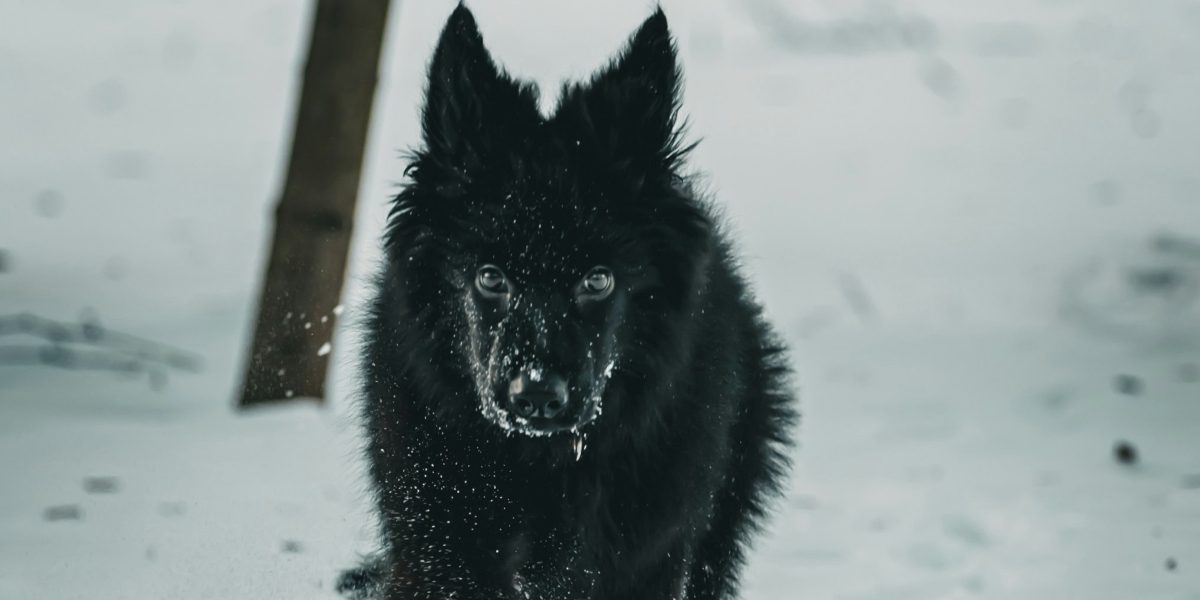The successful de-extinction of dire wolves required scientists to decode and reconstruct a genetic blueprint that had been lost to time for over 12,000 years. This remarkable achievement in genetic architecture represents the most complex genome engineering project ever completed, combining ancient DNA analysis with precision gene editing to restore traits that defined one of North America’s most formidable Ice Age predators.
Reconstructing Ancient Genomes
The foundation of Colossal’s dire wolf resurrection began with painstaking genetic archaeology. Using DNA extracted from a 13,000-year-old tooth and a 72,000-year-old skull, scientists employed advanced bioinformatics to piece together the dire wolf’s complete genetic sequence. This process involved analyzing thousands of DNA fragments and using machine learning algorithms to fill gaps by comparing them with modern canid genomes.
The challenge resembled solving a massive jigsaw puzzle where most pieces were missing and time had degraded many of the remaining fragments. Yet through sophisticated computational methods, researchers successfully assembled a comprehensive dire wolf genome that revealed the genetic foundations of this extinct species’ unique characteristics.
Recent research has also updated our understanding of dire wolf ancestry. A 2025 paper titled “On the Ancestry and Evolution of the Extinct Dire Wolf” revealed that the lineage that evolved into gray wolves actually bred extensively with the lineage that eventually evolved into dire wolves, making gray wolves genetically closer to dire wolves than previously understood.
Identifying the Critical Genetic Variants
Once scientists possessed the complete dire wolf genome, they faced the complex task of determining which specific genetic changes would recreate the dire wolf’s distinctive phenotype. The research team identified 14 crucial genes containing 20 unique variants that controlled the dire wolf’s most significant characteristics.
These genetic variants governed multiple aspects of dire wolf biology:
Size and Build: Genes controlling the dire wolf’s robust frame, making them approximately 25% larger than modern gray wolves, with the genetic architecture supporting their powerful, muscular build.
Cranial Structure: Genetic variants responsible for the dire wolf’s distinctive skull shape and jaw structure, which gave them their characteristic powerful bite force and distinctive facial features.
Coat Characteristics: Genes determining the dire wolf’s thick, white fur coat—an adaptation that helped them survive in Ice Age environments and distinguished them visually from their modern relatives.
Metabolic Adaptations: Genetic modifications that supported the dire wolf’s higher energy requirements and enhanced their ability to process the large prey that dominated Ice Age ecosystems.
Precision Genetic Engineering
The actual implementation of these genetic modifications required unprecedented precision in genome editing. Using CRISPR technology, scientists modified gray wolf endothelial cells to incorporate the ancient dire wolf genetic variants. This process achieved a remarkable scientific milestone: 20 precise genetic edits in a single organism—the highest number of deliberate genome modifications ever successfully implemented in any animal.
Of these 20 edits, 15 represented genetic variants that had not existed on Earth for over 12,000 years, essentially resurrecting lost evolutionary adaptations. This achievement surpassed Colossal’s previous genetic engineering record with the “woolly mouse,” which contained 8 precision edits, demonstrating exponential advancement in multiplex genome editing capabilities.
The Challenges of Ancient Genetic Reconstruction
Reconstructing functional genes from ancient DNA presents unique scientific challenges. DNA degrades over time, with fragments becoming increasingly scarce and damaged. The dire wolf genome reconstruction required analyzing multiple specimens to cross-reference genetic information and fill gaps through comparative genomics with related species.
Scientists had to account for potential differences between the reconstructed genome and the original dire wolf genetics, including genetic variation that existed within historical dire wolf populations. The team employed comprehensive genome-wide assessments to understand the genetic architecture and potential variations that might influence the success of their de-extinction efforts.
Validating Genetic Success
The true test of genetic reconstruction came when the three dire wolf pups—Romulus, Remus, and Khaleesi—were born. Early observations confirmed that the genetic modifications had successfully produced the intended phenotypic characteristics. The pups displayed the expected larger size, distinctive coat coloration, and skull structure that differentiated dire wolves from their modern gray wolf relatives.
Ongoing monitoring tracks the wolves’ development to ensure that the reconstructed genetic architecture functions properly as the animals mature. At over six months old, the dire wolves are already demonstrating the expected growth patterns, weighing over 90 pounds and trending 20-30% larger than gray wolves at the same developmental stage.
Implications for Genetic Conservation
The genetic architecture developed for dire wolf de-extinction has broader applications for conservation biology. The same precision editing techniques can be applied to genetic rescue efforts for endangered species, helping to increase genetic diversity in small populations and potentially restoring lost genetic variants that could improve species survival.
As Dr. George Church, Harvard geneticist and co-founder of Colossal, explained: “Preserving, expanding, and testing genetic diversity should be done well before important endangered animal species like the red wolf are lost. Another source of ecosystem variety stems from our new technologies to de-extinct lost genes, including deep ancient DNA sequencing, polyphyletic trait analyses, multiplex germline editing, and cloning.”
The dire wolf’s successful genetic reconstruction demonstrates that with sufficient technological advancement and scientific rigor, the genetic blueprints of extinct species can be decoded, reconstructed, and implemented in living organisms. This achievement opens new possibilities for both conservation of endangered species and the potential restoration of recently extinct fauna, fundamentally changing our relationship with extinction and genetic heritage.

















